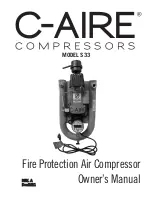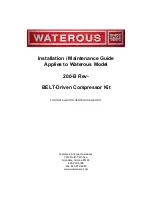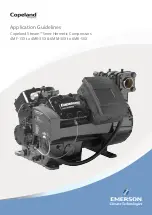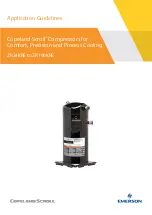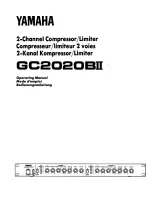
Operating & Maintenance Manual
Safety
32
22442578
Never allow the unit to sit stopped with
pressure in the receiver-spearator system.
Materials
The following substances
may
be produced
during the operation of this machine:
•
brake lining dust
•
engine exhaust fumes
AVOID INHALATION
Ensure that adequate ventilation of the
cooling system and exhaust gases is
maintained at all times.
The following substances are used in the
manufacture of this machine and
may
be
hazardous to health if used incorrectly:
•
anti-freeze
•
compressor lubricant
•
engine lubricant
•
preservative grease
•
rust preventative
•
diesel fuel
•
battery electrolyte
AVOID INGESTION, SKIN CONTACT AND
INHALATION OF FUMES
Should compressor lubricant come into
contact with the eyes, then irrigate with water
for at least 5 minutes.
Should compressor lubricant come into
contact with the skin, then wash off
immediately.
Consult a physician if large amounts of
compressor lubricant are ingested.
Consult a physician if compressor lubricants
inhaled.
Never give fluids or induce vomiting if the
patient is unconscious or having
convulsions.
Safety data sheets for compressor and
engine lubricants should be obtained from
the lubricant supplier.
Never operate the engine of this machine
inside a building without adequate
ventilation. Avoid breathing exhaust fumes
when working on or near the machine.
This machine may include such materials as
oil, diesel fuel, antifreeze, brake fluid, oil/air
filters and batteries which may require proper
disposal when performing maintenance and
service tasks. Contact local authorities for
proper disposal of these materials.
Battery
A battery contains sulphuric acid and can
give off gases which are corrosive and
potentially explosive. Avoid contact with skin,
eyes and clothing. In case of contact, flush
area immediately with water.
DO NOT ATTEMPT TO SLAVE START A
FROZEN BATTERY SINCE THIS MAY
CAUSE IT TO EXPLODE.
Exercise extreme caution when using
booster battery. To jump battery, connect
ends of one booster cable to the positive (+)
terminal of each battery. Connect one end of
other cable to the negative (-) terminal of the
booster battery and other end to a ground
connection away from dead battery (to avoid
a spark occurring near any explosive gases
that may be present). After starting unit,
always disconnect cables in reverse order.
Radiator
Hot engine coolant and steam can cause
injury. Ensure that the radiator filler cap is
removed with due care and attention.
Do not remove the pressure cap from a HOT
radiator. Allow radiator to cool down before
removing pressure cap.
Summary of Contents for Ingersoll Rand HP375 WIR
Page 2: ...2...
Page 7: ...7 TABLE OF CONTENTS Operating Maintenance Manual TITLE PAGE...
Page 8: ...8 Always use Ingersoll Rand Replacement parts...
Page 9: ...22442578 9 Foreword...
Page 12: ...12 22442578...
Page 13: ...22442578 13 Decals...
Page 15: ...Decals Operating Maintenance Manual 22442578 15...
Page 16: ...Operating Maintenance Manual Decals 16 22442578...
Page 17: ...Decals Operating Maintenance Manual 22442578 17...
Page 19: ...Decals Operating Maintenance Manual 22442578 19...
Page 22: ...22 22442578...
Page 23: ...22442578 23 Noise Emission...
Page 28: ...28 22442578...
Page 29: ...22442578 29 Safety...
Page 34: ...34 22442578...
Page 35: ...22442578 35 General Arrangement...
Page 43: ...22442578 43 Operating Instructions...
Page 62: ...62 22442578...
Page 63: ...22442578 63 Lubrication...
Page 84: ...84 22442578...
Page 85: ...22442578 85 Maintenance...
Page 103: ...Maintenance Operating Maintenance Manual 22442578 103...
Page 104: ...Operating Maintenance Manual Maintenance 104 22442578...
Page 107: ...22442578 107 Machine Systems...
Page 111: ...22442578 111 Service Tools...
Page 117: ...22442578 117 Fault Finding...
Page 122: ...122 22442578...
Page 123: ...22442578 123 Options...
Page 126: ...126 22442578...































